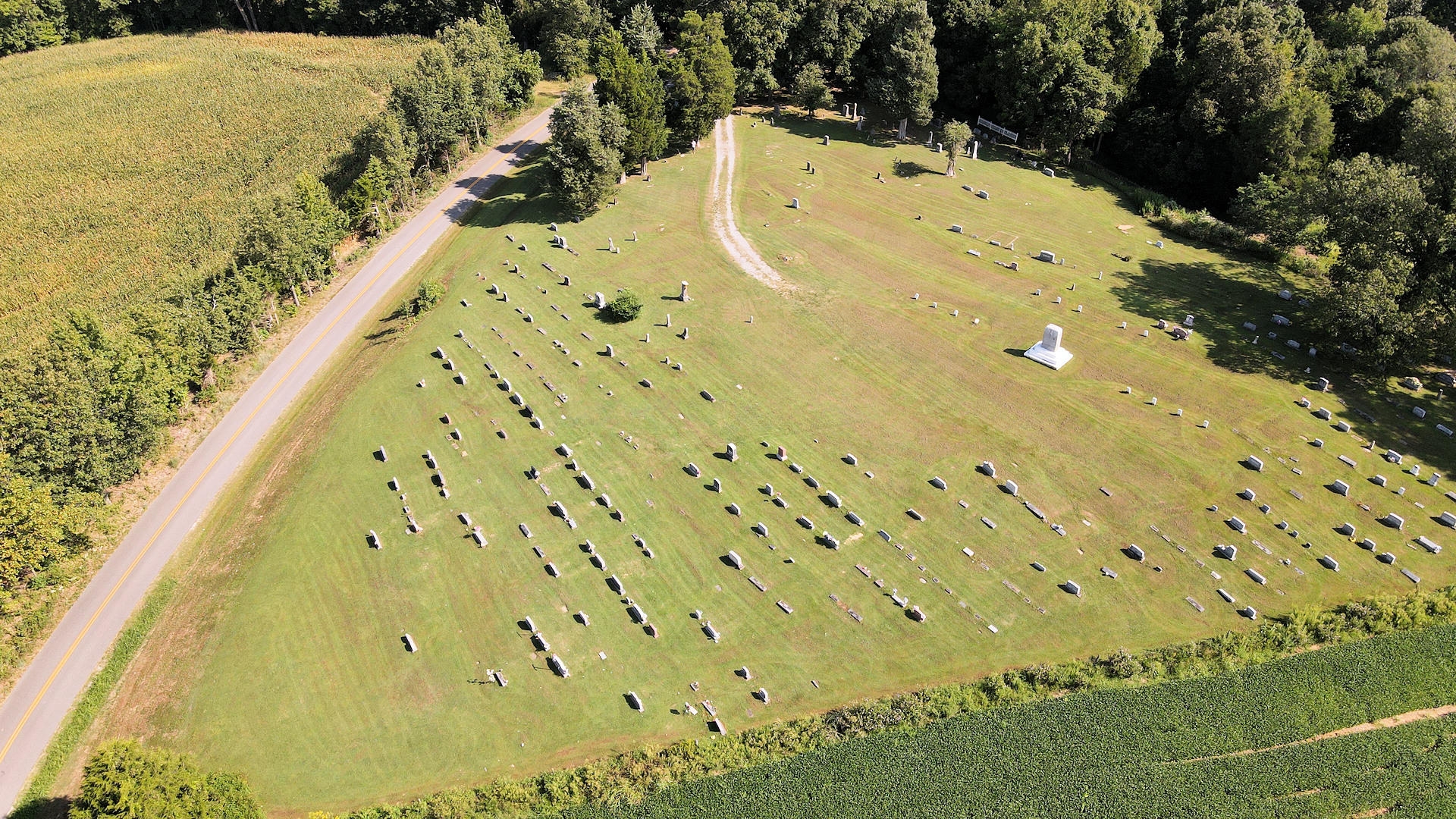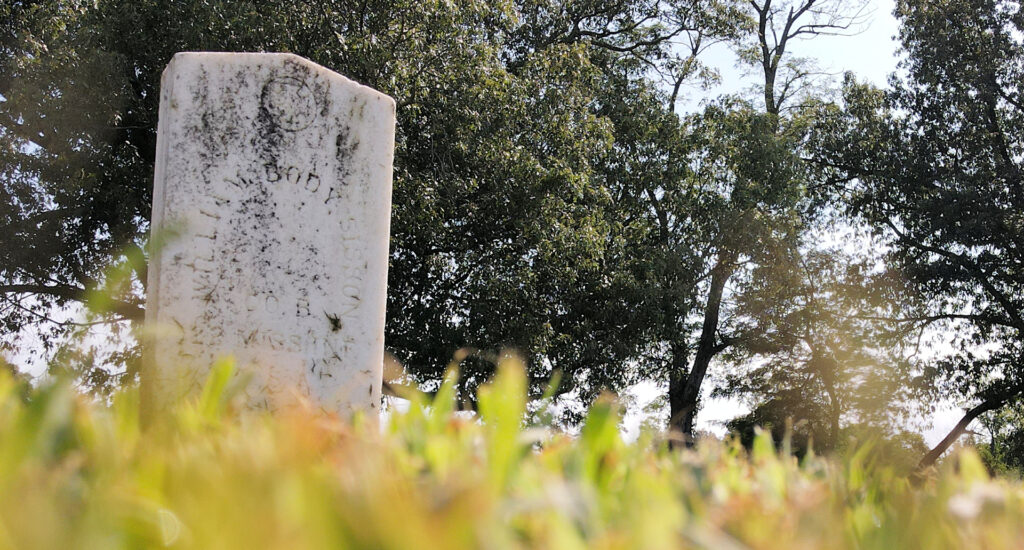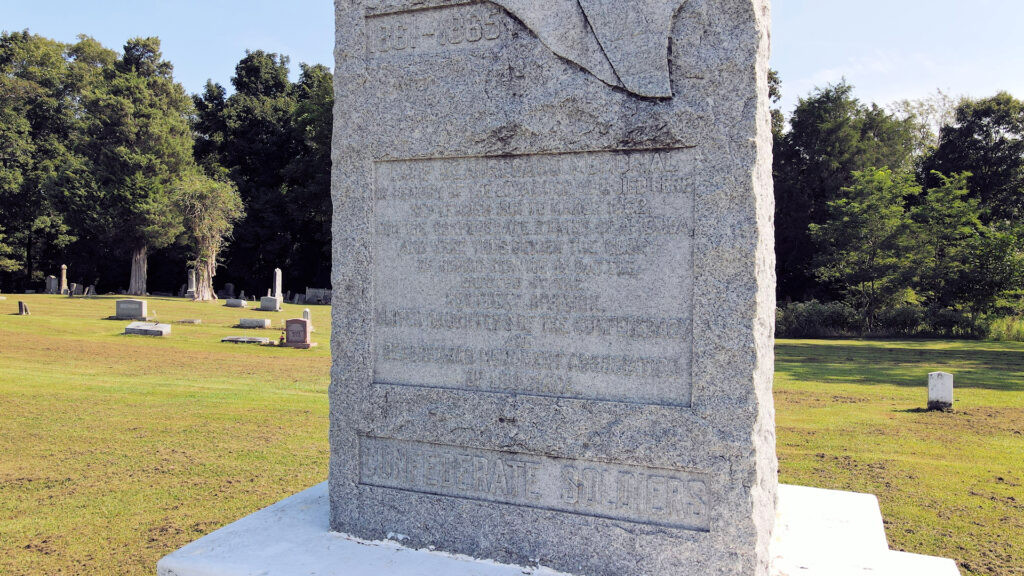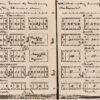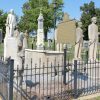Looking at the featured photo of this article, you might think it’s just another cemetery. However, today’s Camp Beauregard cemetery has dystopian Civil War roots of disease and depression. Up to 30% of soldiers who came here would be dead within months, but not from bullets or cannon fire.
Kentucky’s neutrality during the beginning of the Civil War brought hopes the state would avoid significant warfare. On the contrary, with sections of Kentucky sympathetic to either the Union or Confederacy, many battles took place in the commonwealth.
The Jackson Purchase region of western Kentucky was very sympathetic to the Confederate cause, with the seven counties home to hundreds of slave owners and thousands of slaves.
The Confederate defense line in this part of Kentucky stretched from Columbus to Fort Henry (now under Kentucky Lake) and on to Fort Donelson and Bowling Green. With the defense line north of the Kentucky/Tennessee border, the state became the site of many battles and skirmishes.
General Albert S. Johnson, stationed at Bowling Green, saw the vulnerability of the defense line from Columbus to Fort Henry. He instructed Lieutenant Joseph Dixon in September 1861 to scout areas around Graves County, somewhere along the Paducah & Mobile Railroad, and construct a fortified camp for training and defense against the Union army. The federal forces had taken Paducah earlier that month and were threatening to move south.
In addition to the camp protecting the defense line and being located on the railroad, site selection heavily depended on an abundance of timber and water. Lieutenant Dixon discovered a spot south of Mayfield, less than a half mile off the railroad near Morse Station (today’s Water Valley). Rich with timber, situated on a hill overlooking the Bayou de Chien and other tributaries, the site of the future Camp Beauregard was ideal.
Camp Beauregard populated quickly. Thousands of troops from different brigades came in from Arkansas, Mississippi, Missouri, and of course Kentucky. By the end of September, 2668 men along with 193 officers camped there.
The troops, many of them untrained, were ordered to over-winter at the camp and prevent raids from the 6,000 federal troops stationed at Paducah. Supplies and services were made available to the Confederate troops by the people living in Mayfield and Feliciana, located about a mile down the road, and served with the nearby railroad.
Soldiers stationed at Camp Beauregard typically participated in training, drills, and reconnaissance. Early on they built rifling pits and log pens, which contained their tents for roofs and a fireplace on one end of the structure. The fireplace provided warmth for the harsh winter of 1861-62.
Harsh Winter Brings Disease
The unusually cold and wet weather that winter brought diseases and epidemics to Camp Beauregard that would mock today’s COVID-19 pandemic. With the bitter elements, close quarters and poor ventilation of the campsites, disease spread like wildfire through Camp Beauregard.
Measles spread among some of the men, which lead to bronchial and intestinal diseases. Pneumonia and Typhoid fever became prevalent with 75 cases being reported in one month in just one regiment, according to a written testimony by a veteran doctor.
The worst came with an outbreak of spinal meningitis. The horrific disease killed almost everyone who contracted it, sometimes within hours. A soldier could be perfectly healthy in the morning, but dead from the dreadful illness by nightfall.
As told by one account of a veteran: “the men in a certain company had just come in from drilling and whilst waiting for their dinner to cook, one of them commenced to talk queer; then jerk his head back and fall over in convulsions.”
Doctors at the camp had no idea how to treat the disease and had few options to prevent the spread. Bloodletting was practiced but did nothing. Some rationing of food and segregation of the men did have some positive effect on the spread – a resemblance of today’s “social distancing”.
The rampant illnesses and violent diseases spreading through Camp Beauregard caused many to fear for their lives. Morale dropped precipitously and many became depressed. The men came to fight the Union forces – not the enemy of sickness and disease.
During the six months of Camp Beauregard’s existence, between 1,000 and 1,500 deaths occurred among the 5,000 and 6,000 men who trained there. The mortality rate was astronomical. Simply going to train at the camp meant you had a 20 to 30% chance of dying from disease while there.
Disease Leads to Depression
Due to the low morale, some men stationed at the camp resorted to desertion. The penalty for abandoning your post was horrendous. One account of three men who deserted the camp and were caught was documented by a soldier. As researched by author Dieter C. Ullrich, the veteran wrote:
“On last Friday all the troops at this station were assembled together and formed into a square for the purpose of witnessing the punishment of three men, belonging to the First Missouri regiment convicted of desertion . . . They were branded on the left hip with the letter “D,” which was done with a hot iron made in the shape of that letter, their heads were closely shaved, and finally they were each hit fifty lashes upon the back, in the presence of all their comrades, and drummed out of the service to the tune of the ‘Rogue’s March. ‘”
Other men resorted to heavy drinking. Nearby Feliciana contained a saloon for troops to go and drink. Men would go to Feliciana, attempting to drown their depressing situation in alcohol, which usually led to worse outcomes.
According to another account published by Ullrich, a private named William J. Howard of the Ninth Arkansas recounted a punishment of two soldiers who got intoxicated and robbed some women:
“The prisoners were sentenced to leapfrog around a bullring for one hour, rest four hours and so on. The bullring was thirty feet in diameter and was made by driving studs into the ground six feet apart. The studs were eighteen inches high with boards two feet long layed across them flat on top. They had to do this for thirty days living on bread and water the whole time.
“They had to leap over the boards at the tap of a drum with a bayonet close behind them. Often they would faint. When the thirty days were out the whole division was called out and formed into a hollow square. The three men were then stripped to the waist and their heads shaved. They were marched around close in front of all the other men so that all could see them well.
“Three stacks of arms were made and one of the men tied to each stake, then the ten musicians were ordered to give each man ten licks with a horse whip. The bass drummer was last to come and was ordered to cut the skin at every lick where the first man had been told to strike lightly, they cried out with pain at every blow he struck them. The twelve guards who had been guarding them all the time with fixed bayonets double quicked them out into the woods and left them.”
Abandoning Camp Beauregard
No battles or skirmishes were fought at Camp Beauregard. On numerous occasions, soldiers were sent up the railroad to Mayfield to defend the town from Union forces. The threat of the federal troops running south along the railroad seemed always eminent, with reportedly Mayfield being taken and then abandoned by the Union and Confederacy several times.
In January 1862, reports were widely circulated the Union forces were about to invade Kentucky. The Confederate troops abandoned Camp Beauregard the following month, burned the buildings there and quickly moved out.
The troops also destroyed the railroad tracks from Fulton Station to five miles south of Mayfield (present-day Pryorsburg) and burned railroad bridges as far north as Viola, about seven miles north of Mayfield. Even the locomotive at Fulton serving this part of the railroad got blown up. All this prevented the Union forces from immediately using the railroad to drive deep in Confederate territory.
As Union forces began conquering Kentucky and headed south in 1862, Camp Beauregard remained abandoned. In the summer of 1863, Union forces occupied the camp for about a month. After the Civil War and through the next 30 years, the site had become neglected and largely forgotten.
Remembering Camp Beauregard
In the 1890s, efforts were made by Confederate veterans to have the site recognized as a memorial to the hundreds of soldiers who died there. The cause was taken up by the Kentucky Division of the United Daughters of the Confederacy to erect a monument at the site. After decades of delays, a monument was finally erected in 1920. The monument today can be visited at the former site of Camp Beauregard along with a handful of marked Confederate soldier graves. Scores of other graves are unmarked.
The cemetery at Camp Beauregard continues to see interments today. The grounds are monitored by video to protect the site’s historical significance. If you plan to visit, please show respect.
The events that took place during the Civil War presented the darkest time in America’s history. Countless stories of atrocities on both sides remind us how good things are today. Accounts of what happened at Camp Beauregard – from the fatal illnesses to the mistreatment of soldiers – paints a grim picture of life 160 years ago. And not just with those who served in the armed forces. Everyday folks had to endure years of raids by both sides, guerrilla attacks, theft, arson, murder, and so much more.
During those days, the Civil War was hell on earth, nothing compared to the “cruelties” of American life today.
Extensive, in-depth research can be found online about Camp Beauregard. Some of the research details troop movements through western Kentucky, taken from personal diaries of the men who fought. The accounts used in this feature come from The Filson Historical Quarterly, Vol. 76, no. 4, pp. 459-493, in an article titled “Confederate Operations in the Jackson Purchase: A History of Camp Beauregard”, scanned and provided online at jacksonpurchasehistory.org. See the link in the Resources section below.
Location of Camp Beauregard
Resources
- The Register of the Kentucky Historical Society, Vol. 61, No. 2, pp. 148-157 – Camp Beauregard – Phillip M. Shelton
- The Filson Historical Quarterly, Vol. 76, no. 4 (Fall 2002) – Confederate Operations in the Jackson Purchase: A History of Camp Beauregard – Dieter C. Ullrich


